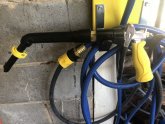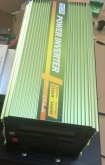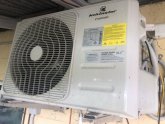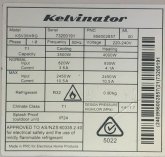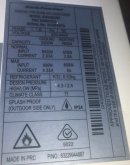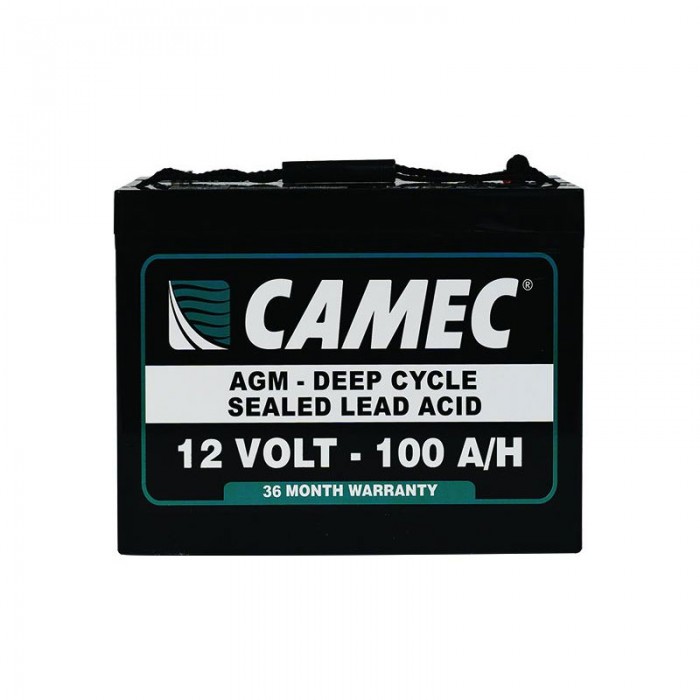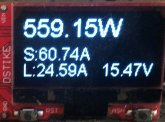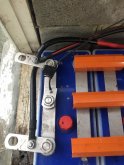It's not irrational hatred. No hatred at all. I think they are very interesting, but I would never buy them. And no, virtue signalling not present in my arguements.Dear Will,
So, I guess I need to address your hit piece on NIFE which I thought border lined on irrational hatred. Now I guess you probably looked at these batteries back in the day and decided they didn’t suit a RV installation, and I would agree. But transport isn’t the only application for batteries and many of the parameters you mentioned are simply irrelevant for stationary solar storage.
First off, solar panels are friggin cheap dude!!! What’s the big deal having a few more!! After all think of all the virtue signaling you will get from an impressively large array!! ? If your limited on space then yeah perhaps NIFE is not for you. 35% efficiency? Well that’s not always true and you can get efficiencies closer to lead acid if that’s relevant to you with the right charge profile and setup. But again, for me that’s irrelevant, and even if it was 50% efficient, I’d still consider this chemistry.
Second, yeah, the batteries themselves are heavier and larger, but again for static applications this is irrelevant! If you have a back yard with space for a garden shed then you have the space. You could also stack these vertically along the wall of a garage if you really wanted to. For some this is going to be an issue, I get that, it’s not an issue for me and I suspect it’s also not an issue for many of your viewers.
Third, lets talk for a moment about the disposable razor blade business model. Battery manufactures want repeat business, its not in their interest to sell you a battery that lasts you a lifetime. It is in their interest to sell you a product every 5 years, 15 years whatever. This is why Exide purchased Edison then quietly allowed it to go away, quite intentionally. I don’t want to be dependent on the grid, and I certainly don’t want to be dependent on battery manufactures to fleece me every 5-15 years. My calculation on Li-ion was 9c per kWh when you take into account cycle count and replacement cost, you might as well be tied to the grid!!! (yeah this is the dirty little secret). Also if you’re a prepper then this is the battery chemistry is for you!! Stock pile the electrolyte and a 2nd set of panels and your good for 60 years or more!
Finally Will, I know you’re a big advocate of lithium in many of its different chemistry's, but lets for a moment consider the pending ecological disaster that’s not all that far off the horizon. You may not be aware but less than 5% of lithium is currently recycled worldwide and lithium is extremely toxic. In Australia it’s even worse….
• only 2 per cent of Australia's annual 3,300 tonnes of lithium-ion battery waste is recycledLithium-ion battery recycling - CSIRO
www.csiro.au
• this waste is growing by 20 per cent per year and could exceed 100,000 tonnes by 2036
Whats happening with the lithium that’s not being recycled today? Is it being stockpiled? Is it going into landfill?? NIFE is 100% recyclable and the waste electrolyte can simply be used on your garden as fertilizer. If you’re going to virtue signal then do it where it counts, we don’t have to rape the planet but we can choose too!!!
View attachment 6772View attachment 6773
Regards,
Jimbo.
Oh, there are some misconceptions here:
- First off, solar panels are very energy intensive for manufacturing, and require a lot of materials. Saying to "buy more solar panels" to offset an efficiency loss is not strategic at all in my opinion.
- Lithium IS being recycled every day, specifically from electric vehicles. That's why we use them. LiFePO4 is EXTREMELY friendly for the environment. Cheap batteries from phones and laptops? Probably going to the dump. And I am ignorant about australia's recycling. Sounds like they are doing a bad job. My mom was raised in australia, and she hates the government there, so maybe you just have a bad system in place?
- Makes sense globally considering china sells more ev's than the entire world combined, and probably do not have a recycling program, because its china haha!
- Stationary system weight does matter because shipping cost is CRAZY. Absolutely insane cost. Which is why even people with nife systems that I know, have complained about this and say people dont factor it in.
- Yes I stand corrected about the new cells. Some can pull off 80% efficiency.
What I find funny is that Edison Battery, who is a pretty big nickel iron battery manufacturer, now sells LiFePO4! What do you think about that?
I personally think nife is neat. Sounds like the best nuclear fall out bunker setup. But for solar for most people? I prefer even LTO, personally.
There are pros and cons here to all batteries. I dont take it personally, they are just batteries.





